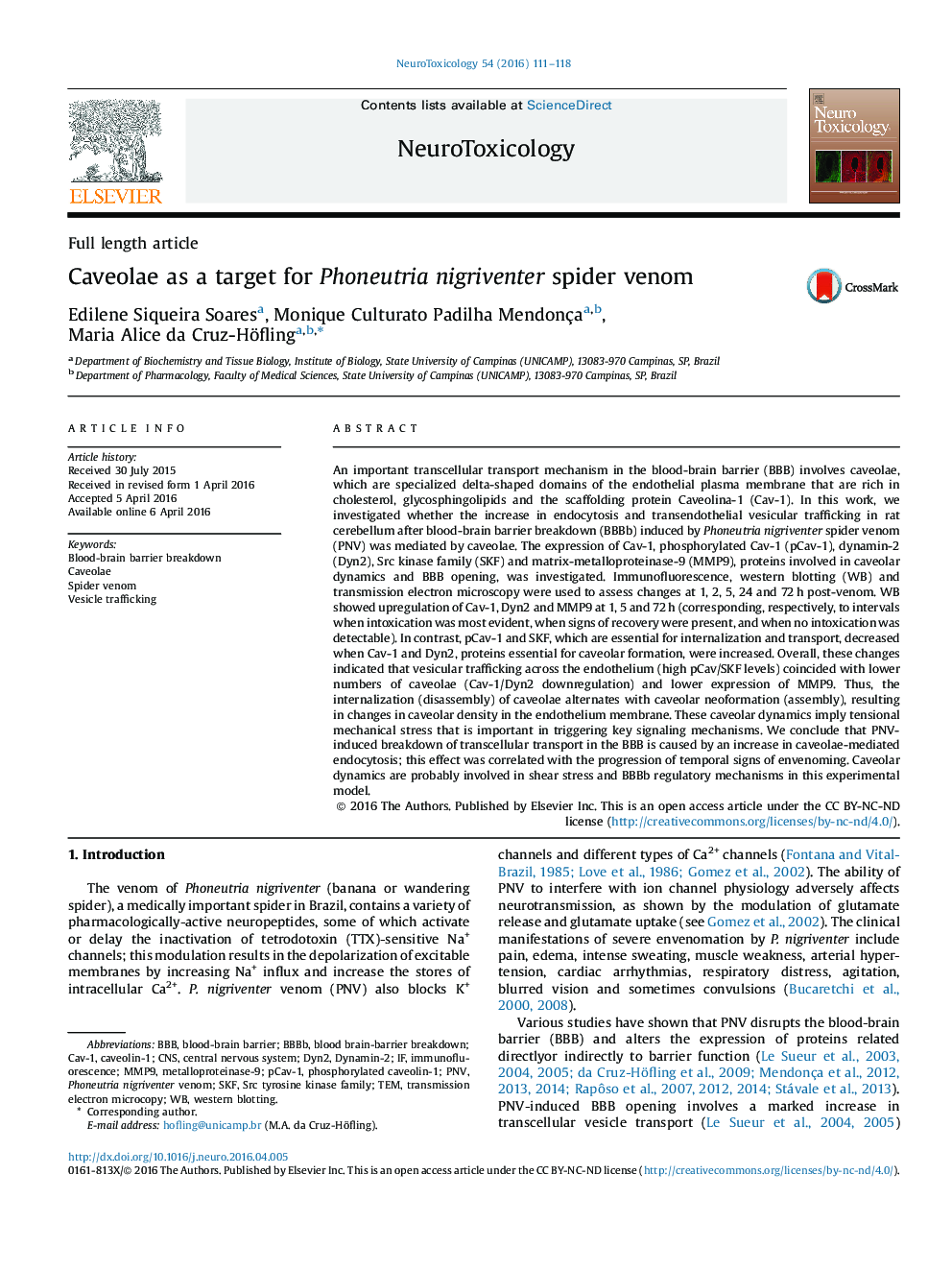| Article ID | Journal | Published Year | Pages | File Type |
|---|---|---|---|---|
| 5854730 | NeuroToxicology | 2016 | 8 Pages |
â¢Caveolae, lipid raft membrane domain was affected by Phoneutria nigriventer venom (PNV).â¢The caveolae former proteins, Cav-1 and Dyn2, increase at critical intervals post PNV exposure.â¢Proteins engaged in internalization/trafficking of caveolae increase when Cav-1/Dyn2 decrease.â¢Caveolae dynamics relate to increases in vesicles formation and transendothelial trafficking.â¢Caveolae assembly and disassembly are related to high expression of MMP9.
An important transcellular transport mechanism in the blood-brain barrier (BBB) involves caveolae, which are specialized delta-shaped domains of the endothelial plasma membrane that are rich in cholesterol, glycosphingolipids and the scaffolding protein Caveolina-1 (Cav-1). In this work, we investigated whether the increase in endocytosis and transendothelial vesicular trafficking in rat cerebellum after blood-brain barrier breakdown (BBBb) induced by Phoneutria nigriventer spider venom (PNV) was mediated by caveolae. The expression of Cav-1, phosphorylated Cav-1 (pCav-1), dynamin-2 (Dyn2), Src kinase family (SKF) and matrix-metalloproteinase-9 (MMP9), proteins involved in caveolar dynamics and BBB opening, was investigated. Immunofluorescence, western blotting (WB) and transmission electron microscopy were used to assess changes at 1, 2, 5, 24 and 72Â h post-venom. WB showed upregulation of Cav-1, Dyn2 and MMP9 at 1, 5 and 72Â h (corresponding, respectively, to intervals when intoxication was most evident, when signs of recovery were present, and when no intoxication was detectable). In contrast, pCav-1 and SKF, which are essential for internalization and transport, decreased when Cav-1 and Dyn2, proteins essential for caveolar formation, were increased. Overall, these changes indicated that vesicular trafficking across the endothelium (high pCav/SKF levels) coincided with lower numbers of caveolae (Cav-1/Dyn2 downregulation) and lower expression of MMP9. Thus, the internalization (disassembly) of caveolae alternates with caveolar neoformation (assembly), resulting in changes in caveolar density in the endothelium membrane. These caveolar dynamics imply tensional mechanical stress that is important in triggering key signaling mechanisms. We conclude that PNV-induced breakdown of transcellular transport in the BBB is caused by an increase in caveolae-mediated endocytosis; this effect was correlated with the progression of temporal signs of envenoming. Caveolar dynamics are probably involved in shear stress and BBBb regulatory mechanisms in this experimental model.
